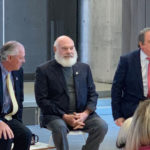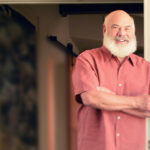What Is Integrative Medicine?

Andrew Weil, M.D., is the world’s leading proponent of alternative medicine, right? Wrong.
Although this is how the popular media often portrays him, Dr. Andrew Weil is actually the world’s leading proponent of integrative medicine, a philosophy that is considerably different from a blanket endorsement of alternative medicine. To fully understand Dr. Weil’s advice – presented in his website, bestselling books and lectures, and reflected in the daily practice of thousands of physicians worldwide (thanks to the in-depth training acquired at the Andrew Weil Center For Integrative Medicine at the University Of Arizona in Tucson) – it’s important to grasp what integrative medicine is, and is not.
The first step is mastering some basic terms. Using synthetic drugs and surgery to treat health conditions was known just a few decades ago as, simply, “medicine.” Today, this system is increasingly being termed “conventional medicine.” This is the kind of medicine most Americans still encounter in hospitals and clinics. Often both expensive and invasive, it is also very good at some things; for example, handling emergency conditions such as massive injury or a life-threatening stroke. Dr. Weil is unstinting in his appreciation for conventional medicine’s strengths. “If I were hit by a bus,” he says, “I’d want to be taken immediately to a high-tech emergency room.” Some conventional medicine is scientifically validated, some is not.
- Watch Dr. Weil discuss the advantages of integrative medicine.
Any therapy that is typically excluded by conventional medicine, and that patients use instead of conventional medicine, is known as “alternative medicine.” It’s a catch-all term that includes hundreds of old and new practices ranging from acupuncture to homeopathy to iridology. Generally alternative therapies are closer to nature, cheaper and less invasive than conventional therapies, although there are exceptions. Some alternative therapies are scientifically validated, some are not. An alternative medicine practice that is used in conjunction with a conventional one is known as a “complementary” medicine. Example: using ginger syrup to prevent nausea during chemotherapy. Together, complementary and alternative medicines are often referred to by the acronym CAM.
Enter integrative medicine. As defined by the National Center for Complementary and Alternative Medicine at the National Institutes of Health, integrative medicine “combines mainstream medical therapies and CAM therapies for which there is some high-quality scientific evidence of safety and effectiveness.”
In other words, integrative medicine “cherry picks” the very best, scientifically validated therapies from both conventional and CAM systems. In his New York Times review of Dr. Weil’s latest book, “Healthy Aging: A Lifelong Guide to Your Physical and Spiritual Well-Being,” Abraham Verghese, M.D., summed up this orientation well, stating that Dr. Weil, “doesn’t seem wedded to a particular dogma, Western or Eastern, only to the get-the-patient-better philosophy.”
So this is a basic definition of integrative medicine. What follows is the complete one, which serves to guide both Dr. Weil’s work and that of integrative medicine physicians and teachers around the world:
Integrative medicine is healing-oriented medicine that takes account of the whole person (body, mind, and spirit), including all aspects of lifestyle. It emphasizes the therapeutic relationship and makes use of all appropriate therapies, both conventional and alternative.
The principles of integrative medicine:
- A partnership between patient and practitioner in the healing process
- Appropriate use of conventional and alternative methods to facilitate the body’s innate healing response
- Consideration of all factors that influence health, wellness and disease, including mind, spirit and community as well as body
- A philosophy that neither rejects conventional medicine nor accepts alternative therapies uncritically
- Recognition that good medicine should be based in good science, be inquiry driven, and be open to new paradigms
- Use of natural, effective, less-invasive interventions whenever possible
- Use of the broader concepts of promotion of health and the prevention of illness as well as the treatment of disease
- Training of practitioners to be models of health and healing, committed to the process of self-exploration and self-development.












